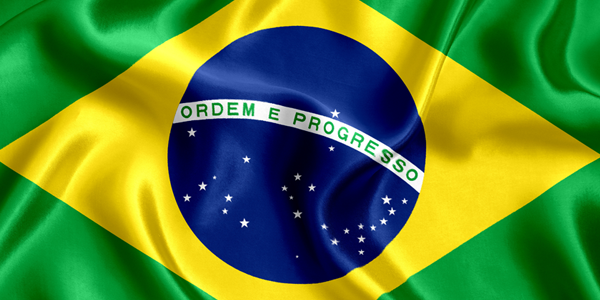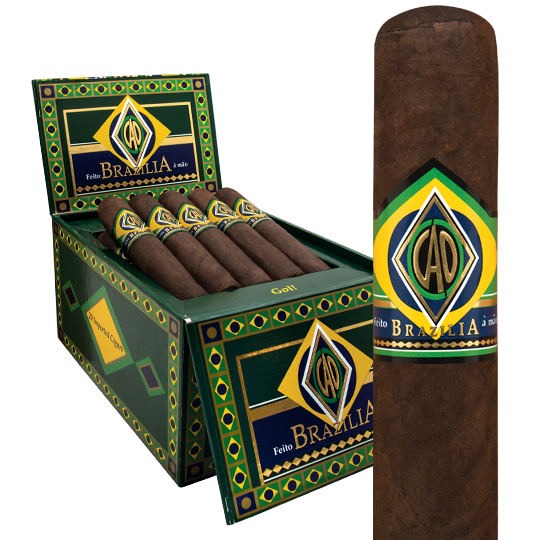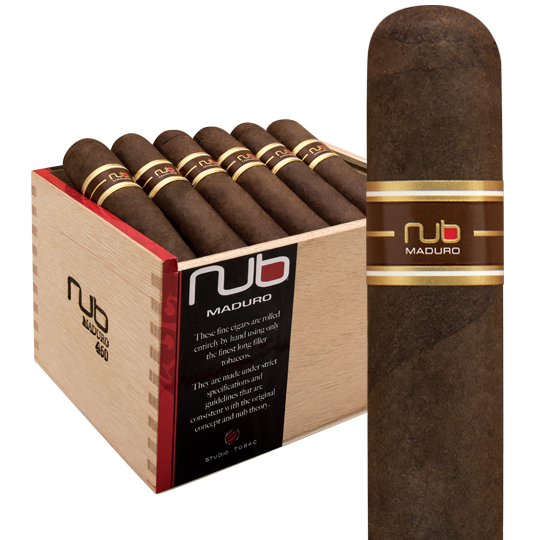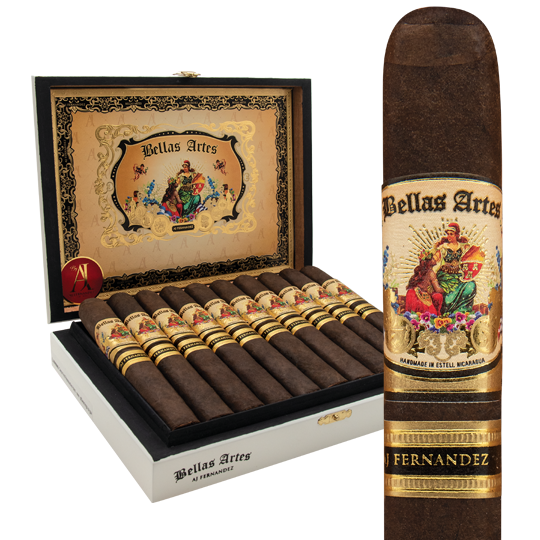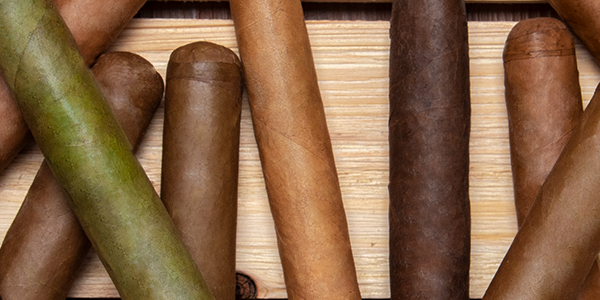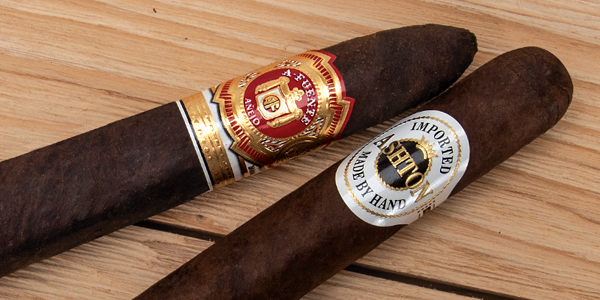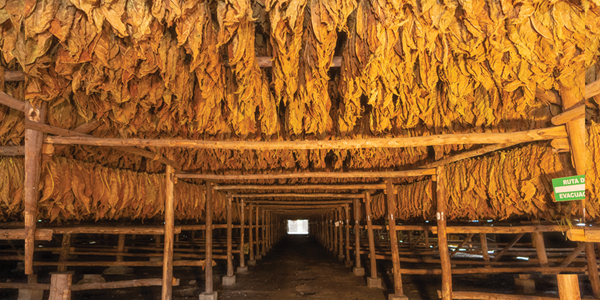Brazilian Cigars
When we’re discussing Brazilian cigars, we’re talking about cigars that are blended with Brazilian tobaccos, as opposed to cigars that are made in Brazil. While Brazil isn’t known as a major producer of premium handmade cigars, at least not compared to the Dominican Republic and Nicaragua, Brazilian tobacco fulfills a small but vital niche for cigar-makers who have grown fond of blending cigars with the country’s crops.
In Brazil’s far eastern province, Reconcavo, in the state of Bahia along the Atlantic Coast, the most prominent tobacco, called Mata Fina, is grown under direct sunlight. Its dark, medium-bodied taste is aromatic and sweet and makes for perfect Oscuro and Maduro cigar wrappers. Brazilian wrappers reveal tasting notes that are distinct from other popular Maduros, such as Connecticut Broadleaf and San Andrés wrappers.
What Makes Brazilian Tobacco Different?
In the Reconcavo Basin in Brazil’s eastern state of Bahia, three main tobaccos are cultivated. They are all variations of Mata Fina, which translates to thin forest, a reference to the region’s wiry vegetation, which is in sharp contrast to the dense jungle of the Amazon. Like Connecticut Broadleaf, Mata Fina tobacco is grown under direct sunlight and is stalk-cut, which results in the smooth, rich, and naturally sweet flavor premium Maduro and Oscuro wrappers are known for. Farmers grow cigar tobacco in the different microclimates of Bahia for different components of a handmade cigar. The tobacco is cured extensively before its rolled. The three primary Mata Fina tobaccos are:
- Mata Sul tobacco comes from the southern area of Mata Fina. Abundant rainfall and fertile soil contribute to the tobacco’s mild body and flavor, but it is tough to harvest because much of the crop is grown on steep hillsides.
- Mata Săo Gonçal is an excellent wrapper crop because neighboring cocoa farmers fertilize the soil with natural compost that imparts much flavor to the tobacco.
- Mata Norte is grown in the north of Reconcavo in an arid climate where the tobacco is cured in open air, imparting a particularly vigorous flavor. This crop makes for an ideal filler and is characterized by notes of coffee beans and nuts.
You’ll encounter two additional Brazilian tobaccos used for wrapper:
- Arapiraca is milder than traditional Mata Fina tobacco, but is great for adding subtle and complex taste to a mellow cigar. The leaves are larger and darker than Mata Fina.
- Brazilian Sumatra refers to crops grown from Indonesian seeds in Brazil. These Shade Grown wrappers are not known for possessing much flavor.
Tobacco has been growing in Brazil for thousands of years, and the workers – mostly women – who sort the leaves, strip the stems, and work the tobacco, are regarded for their superior craftsmanship thanks to the lace industry. When Portuguese colonists arrived in Northeast Brazil the 17th and 18th centuries, they brought with them centuries of lacemaking expertise, which they introduced to the natives as they established colonies. The mastery of one’s hands and precision required to make fine lace is a skill set that translates seamlessly to cigar-making.
The History of Brazilian Cigars
In 1872, Geraldo Dannemann emigrated from Germany to Brazil’s Reconcavo region where he believed the ideal conditions for growing tobacco existed. The dark and fragrant tobacco crops he procured from the local farmers became the first Dannemann cigars, one of the world’s largest producers of cigarillos today.
Brazilian tobacco has been common in small format cigars for generations, but its introduction into premium handmade cigars arose following the Cuban Revolution when many cigar-makers fled Cuba to escape persecution by Castro’s regime. They sought climates favorable for growing premium tobacco in other countries in Central America, South America, and the Caribbean. Former Altadis USA executive José Seijas has attested to the use of Brazilian wrappers on many Primo del Rey cigars in the 1960s and ‘70s. However, only in recent decades have premium cigar-makers marketed their cigars as being rolled with Brazilian tobacco – an intriguing selling point for consumers who are always in search of new and different cigars. CAO was the first brand to promote Brazilian tobacco when it debuted its CAO Brazilia line in 2001 and packaged the cigars in bright yellow, green, and navy blue bands and boxes – the unmistakable national colors of Brazil. Other prominent brands that blend cigars with Brazilian tobacco include Nub, AJ Fernandez, Kristoff, Villiger, and La Flor Dominicana.
Top 6 Brazilian Cigars
Of course, we can’t form a solid opinion of Brazilian cigars without smoking them. Here are six bestselling Brazilian cigars you can indulge in now.
1. CAO Brazilia
CAO Brazilia isn’t the first cigar blended with a Brazilian wrapper, but it’s easily the most popular. You can’t miss the eye-catching boxes and bands rendered in the colors of Brazil’s flag. Brazilia was among the first cigars in the CAO World collection, which highlights different tobaccos from around the world. A nearly jet-black Brazilian wrapper encloses a hearty mix of Nicaraguan long-fillers. A toasty and nutty profile of earth, leather, and coffee layers the palate in a series of standard and bigger ring gauge shapes.
2. Nub Maduro
The short and chunky shapes of Nub cigars have achieved immense popularity, and Nub Maduro shows off the stout format in an oily Brazilian Maduro wrapper leaf over a robust interior of Nicaraguan long-fillers. Tasting notes of dark chocolate and pepper characterize the cool, easy-burning draw Nub cigars deliver. Nub is handmade in Estelí, Nicaragua, at the award-winning Oliva factory. The critics at Cigar Aficionado rated Nub Maduro 90 points.
3. AJ Fernandez Bellas Artes Maduro
Ultra-popular cigar-maker AJ Fernandez continues to pick up fans with a growing portfolio of premium Nicaraguan gems like Bellas Artes Maduro. A hearty profile of cocoa, wood, espresso, and spices unleashes a touch of sweetness in a trio of classic sizes. A dark-brown Brazilian Maduro wrapper hugs a complex marriage of long-filler tobaccos from Nicaragua and San Andrés.
4. Villiger Do Brasil Maduro
Villiger Do Brasil Maduro is rare as one of the few handmade cigars that’s produced in Brazil. Villiger has used Brazilian tobacco in its cigars for years, but most of those are small-format, machine-made cigarillos. The company began producing handmade cigars in the last fifteen years, and the Do Brasil line is its first blended entirely from Brazilian tobacco and handmade in Brazil. Villiger Do Brasil Maduro delivers a smoky and dark profile of earth and mesquite with a charry finish. A milder blend, Villiger Do Brasil Claro, is also made from one hundred percent Brazilian leaves, and offers an easy-going profile of white pepper, citrus, and oak.
5. Kristoff Maduro
The rustic look of Kristoff cigars has made them easy to spot on store shelves. Each cigar is finished with a pigtail on the cap and a shaggy foot at the bottom before they’re packed on a bed of loose tobacco in a rough and rugged cigar box. Kristoff Maduro delivers deep flavors of black pepper, cedar, and roasted espresso beans courtesy of a succulent Brazilian Maduro wrapper and a balanced blend of Dominican and Nicaraguan long-fillers on the inside.
6. Brick House Maduro
Brick House is a value brand blended and produced by the J.C. Newman Cigar Company. Brick House Maduro is drawn from a dark and striking Brazilian Maduro wrapper over a beefy amalgam of vintage Nicaraguan long-fillers. Smoky notes of hickory, earth, leather, and black coffee bless the senses with bittersweet hints of baker’s chocolate in a popular collection of thick formats.

